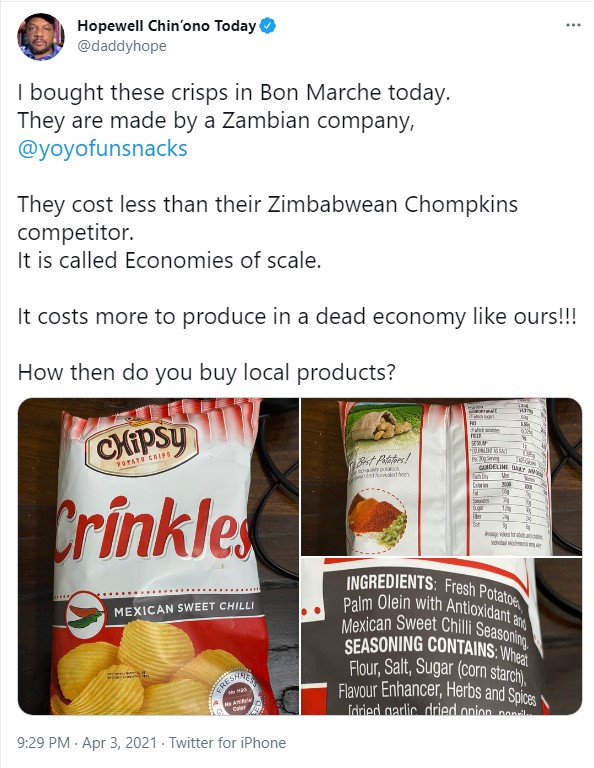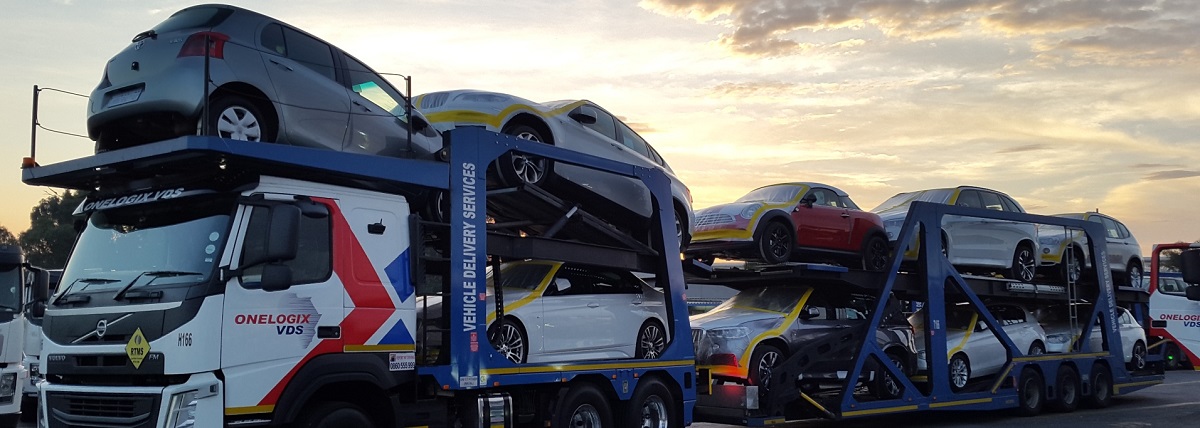Towards the end of last year, Minister for Finance Prof. Mthuli Ncube effectively banned the importation of second-hand cars that are over 10 years old. This ban came by way of striking pre-owned cars from the Open General Import Licence. Minister Mthuli Ncube’s reasons for this action were that Zimbabweans had spent US$1.3 billion on the importation of buses, light commercial vehicles and passenger cars from 2015 to September 2020 as well:
“This is despite the existence of capacity by the local motor industry to assemble the above-mentioned range of motor vehicles”
“Furthermore, due to lack of effective standards and regulation, unroadworthy vehicles, which, in some instances fail to meet environmental and safety standards, find their way onto the market. In line with the National Development Strategy 1, which underscores value addition, I propose to remove second-hand motor vehicles aged 10 years and above, from the date of manufacture at the time of importation, from the Open General Import Licence.”
via The Herald
The import license provision is a poorly disguised ban
When anything is placed under a license it effectively prohibits its widespread use or practice. In some cases this makes sense, for example, it requires a license and many years of education to practice medicine. This is of course necessary because you wouldn’t want everyone and their great uncle operating delicate and complex procedures that take years of practice and understanding to master.
The operation of vehicles, likewise, has a license. It is admittedly a lower one to attain than that of a medical practitioner’s permit, but it assures that anyone on the roads went through a standardised test to certify them to operate a vehicle of a specific class or a number of classes.
However, if you have witnessed some of the driving on the roads you’d be quickly persuaded to think they were handing out that certificate of competence at the VID.
That aside the purchase of a vehicle is something that shouldn’t require a special license whether you are a certified driver or not. Importing a vehicle more so because you already went through the song and dance of charges as well as the insanely high duty in order to get it in.
The government already collects its cut when you import a vehicle of whatever age. Of that US$1.3 billion spent between 2015 and 2020 the taxman got his cut and the govt coffers were filled .Why then prohibit people from bringing in which ever vehicle they choose?
Well… let’s take a look at the reasons Prof. Mthuli Ncube gave.
Zimbabweans spent US$1.3 Billion 2015 – 2020
Instead of complaining that Zimbabweans have spent so much on importing vehicles. The Minister should have asked why are Zimbabweans spending so much on second-hand cars.
The reasons for this are pretty simple. If you want to buy a vehicle locally brand new, the cost to do that is astronomical in respect to the dwindling buying power and earnings Zimbabweans endure.
Buying a car second-hand in Zimbabwe, on the other hand, is mired in a number of complexities which include:
- You will very rarely come across a vehicle with a comprehensive service history. If you buy a used car locally you are pretty much playing Russian Roulette with which part is going to fail and when.
- Local car dealers and private sellers price used cars as though they are coming out of the showroom even though they might be a decade old.
- Very few have as the Americans call it a “clean title”. Changing the ownership of a vehicle is far less important than holding the book itself.
- Stolen vehicles are often sold to unsuspecting marks who aren’t familiar with the due diligence when making a purchase
I am sure there are some I have left out but these issues make the BeForward route a far more stress-free avenue. If you import a Toyota Corrolla C110 (produced 1995 to 2005) from Japan you are cutting out a lot of those issues.
On top of that those cars were built to withstand a lot and need the odd change of timing belt, fluids and suspension components every so often. Also getting one from Japan you know it has been well used but on very forgiving road surfaces.
Banning the importation of such a vehicle without assessing the advantages they offer to the common man/woman makes no sense in my mind. Now there are those who will chime in and say well “what about the local car assembly industry?” Well…
Most goods produced in Zimbabwe are expensive…
We all want the local motor assembly industry to do well. It was one of the pillars that the good old Zimbabwe relied on when things were going well. However, these days most things that are made in Zimbabwe are pretty pricey compared to the imported alternative.
An interesting example of this was tweeted out by journalist Hopewell Chin’ono this morning.

There are cheaper alternatives like Willards Spuds and Willards Cringle Cut which are priced along the same lines as the Zambian alternative (ZWL$130.00, Chompkins are priced at ZWL$160.00). But to make locally produced goods competitive they have to be priced to entice the buyer.
Another example is my search for a garden chair set (don’t ask). Like most who want to support our local businesses, I was shocked when I enquired about the price of a single fold up chair set and was told they are US$20.00 a chair.
Twenty US dollars apiece for what looked like a set of chairs that were constructed from a couple of 2x4s and some screws. My first reaction was to look online for any cheaper alternatives or to just go down to the industrial district and purchase the raw materials myself and turn the whole affair into a team-building exercise with my old man.
The local car assembly industry is going to be operating on the same ridiculous margins. That’s if the industry returns to operating anywhere near the demand for vehicles. In February there was still talk of “reviving” the local car assembly industry but when the second-hand car ban was first announced last year the Minister for Finance seemed to assert that the industry is already there.
To make matters worse there have been no signs of financial institutions making the move to add financing options for Zimbabweans who want to buy locally assembled cars.
In December last year, Willovale Motor Industry chairperson Ben Khumalo lauded the 10 year second-hand car ban but said:
“Government is right in bringing the policy framework but there are issues which need to be sorted out which include the cost aspect because we need to create a market that can easily have access to the local models by allowing financial institutions to play a role in the whole value chain”
via AllAfrica
Without financing options to make the local industry competitive, it makes no sense to create friction through the Import Licence for those who can afford something second-hand, duty and all.
If the financing options do arrive, then they will have to sensitive to the nature of incomes in Zimbabwe. Without this many will just save up hard currency and buy the allowed vehicles second-hand from other markets.
Roadworthiness of second-hand cars
To this, I ask “Are Zimbabwe’s roads vehicle worthy?”. Of course, they are not, you’d be hard-pressed to find anyone who hasn’t had to swerve or been jolted when encountering a pothole camouflaged by the shade of a tree.
The state of the nation’s roads currently has a score of 2.8 on the Global Economy’s Survey. You’d expect any other country to address the state of the roads before banning the importation of any vehicle that uses them. If roadworthiness was so important then the government would have continued exploring the British Ministry of Transport test (MOT Test) copycat they were toying with back in 2017.
The MOT (in Britain) is there for vehicles 3 years and older to ensure that those vehicles are being maintained to a certain standard. Back in 2017 parliament proposed such a test for private and public vehicles:
“As a committee, we are proposing that VID must inspect all motor vehicles in Zimbabwe, be they black on yellow plates or red on white plates which are private and public service vehicles. There are approximately 1,5 million vehicles that are on our roads and they have not been inspected, in fact, a good number of them have not been inspected with a view of reducing road carnage”
Dexter Nduna, then Chairman of the Portfolio Committee on Transport and Infrastructural Development (Sunday News)
The fee for this test was going to be $50, now it was 2017 so I am assuming it was in US dollars which is ridiculously high when it can be a nominal one of between US$5 -US$10. This will save motorists more money they could use to keeping their vehicles in working order.
A yearly vehicle test will also help maintain the resale value of cars. Like in Britain anyone in Zimbabwe should be able to check the “MOT” status of a vehicle before they make a purchase.
Furthermore, this money could be earmarked to help maintain the roads. But that is more of a wish than anything else because the degradation of the roads has continued while ZIMRA rakes in record sums from tollgates.
However there is a massive problem with the MOT test if it is applied to Zimbabwe.
The VID shouldn’t be the only place to get it
Shady things go on at the VID, and this is no secret. Making the VID the only place to get your “MOT Test” will expand the reach of that shadiness. If the government wants to implement this for second-hand cars older than 10 years, they will have to take inspiration from the British.
Anyone with a garage can apply to get MOT certification, provided they meet the requirements
suitable premises and approved equipment for the vehicle classes you want to test
The AE is an individual, partnership or company authorised by the Driver and Vehicle Standards Agency (DVSA). The AE is responsible for making sure that:
1. MOT tests are properly conducted
2. the test facilities and equipment are checked and well-maintained
3. MOT documents are correctly stored and access to electronic MOT test systems is only given to eligible users
4. The MOT testers are assessed correctly and complete training and assessments
5. DVSA staff have access to the premises for checks on staff and equipment
6. DVSA is informed about significant changes to the business within 7 working days
UK Government
There are a number of companies in Zimbabwe that have suitable premises to run the inspection and give out certifications. In this case (and many others) it shouldn’t be a case of the government issuing a mandate and only offering the service to satisfy it through its agencies.
This could be an opportunity to rope in the service centres and independently owned garages. If the government is so concerned with the local car assembly market, it should be equally concerned about the fortunes of those who repair cars locally.
In closing…
As much as I would wish for the government to rethink the ban on second-hand cars over ten years old. It’s unlikely to happen and if it does happen it will be well after the failures of the mandate.

What’s your take?